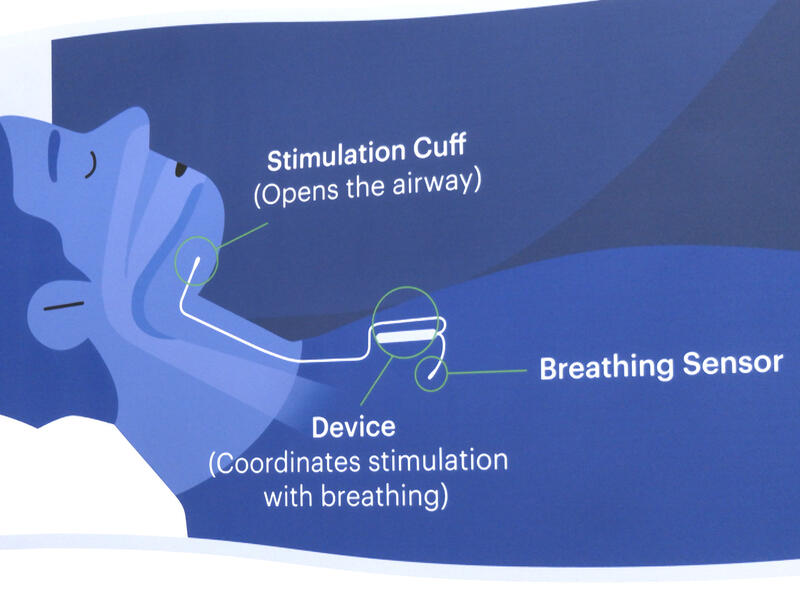When Anna Schettler of Bismarck, North Dakota, tried on her old CPAP machines, it brought back some bad memories.
“If you turn over in bed, it brings this loose. There’s a hole here by my nose,” Schettler said, showing off one of her previous machines. “I have another mask that I tried at first, but that affected my ears. My nostrils would get sore. It was not my cup of tea. By any means.”
So Schettler, who had been using CPAP machines for 15 years, went searching for an alternative. She found one right in her own hometown.
Alternative to CPAP
Marie-Pierre Charron, M.D., is an ear, nose and throat specialist at Sanford Health in Bismarck, and since 2019, she has been implanting patients like Schettler with a sleep apnea device called Inspire.
The device itself is implanted below the collarbone and is turned on each night by the patient using a remote. A sensor inside the implanted device determines if a patient’s breathing stops during the night. Then a small wire called a stimulation cuff, which is wrapped around a nerve in the neck, activates whenever the airway is blocked.
“You can picture the airway like a straw. And when there is an obstruction, it’s as if there is a kink in the straw,” Dr. Charron explained. “Inspire, what it does, it stimulates the muscle responsible for the kink by pushing the tongue gently forward and opening the airway throughout the night.”
For Schettler, the only discomfort she feels at all is in the morning, from the “workout” her tongue gets while she’s sleeping.
“I know the mornings when I get up that it must have worked a lot because I have a little irritation. I drink some water and have some coffee and it’s gone. But it’s like those muscles are tired from being told to go to work,” Schettler said.
The difference in her sleep however is night and day.
“I was so tired when I woke up. I would sleep, but not good and I would be so tired,” Schettler said. “I was to the point where I didn’t care if I got out and cleaned my house or dusted my furniture, and now I’m up and going all the time, because I have the energy from the good sleep that I can do things. That was the big change for me, getting my energy back.”
A secondary option
Dr. Charron is careful to note that the Inspire device isn’t for everyone.
“That CPAP machine is the gold standard,” Dr. Charron said. “An upper airway stimulator is an alternative for a patient who is not tolerating their CPAP machine.”
It also requires a few tests, a body mass index under 40, insurance approval, and a new sleep study as well. It’s that sleep study though that showed the huge difference the device made in Schettler’s life.
“She had about 50 episodes an hour. When we have 30 and above, that’s considered to be very severe,” Dr. Charron said. “She went down to 13, and 13 is considered to be mild.”
Schettler said she couldn’t be happier with her device. And after 15 years on a CPAP machine, any alternative was welcome – and she would have gone anywhere to get it, she said.
“To have it right here at home, that is so wonderful,” Schettler said. “We’re Sanford people anyway, and just to know that my own hospital has the person I can use, I felt very comfortable.”
Learn more
- New to CPAP? Tips on getting used to sleep apnea treatment
- Sleep apnea brace offers comfortable alternate to CPAP mask
- Inspire therapy: Treating sleep apnea without a mask
…
Posted In Bismarck, Ear, Nose & Throat, Pulmonology, Sleep Medicine

